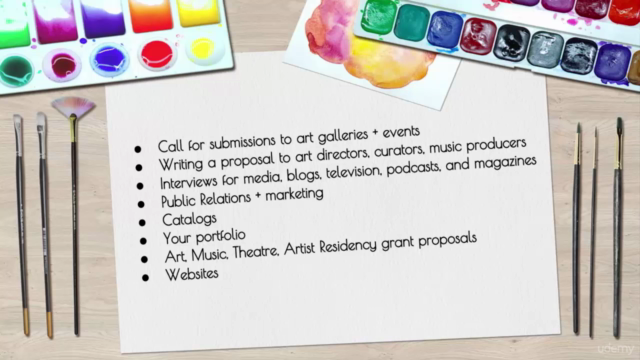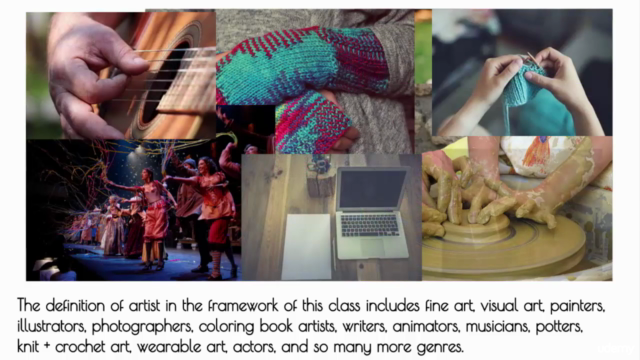Digital Nomads. Your Artist Bio & Sell Your Art in Galleries

Why take this course?
Based on the structure provided, let's break down the content into clear lessons and actionable steps that artists can follow to sell their art in gallery boutique shops.
SECTION 2: Sell Your Art in Art Gallery + Museum Boutique Shops
Overview: Artists, crafters, and makers often dream of seeing their work sold in art galleries and museum shops. This section will guide you through the process of approaching gallery boutique curators, preparing your submissions, leveraging reciprocal memberships, and understanding the secrets to success in these esteemed venues.
Lesson 1: Approach Art Galleries + Museum Shop Curators
- Research galleries and museum shops that align with your art style and aesthetic.
- Understand the type of artwork they showcase and their clientele.
- Build a list of targeted gallery boutique curators to approach.
Lesson 2: Examples of Submission Emails to Curators
- Draft a professional and concise email introduction.
- Highlight your unique selling points and what makes your art stand out.
- Attach images of your work and any relevant press or exhibition history.
- Follow up with a phone call if there is no response after a week or two.
Lesson 3: Reciprocal Art Gallery Memberships + Over 700 Art Galleries Accepting New Artists
- Investigate reciprocal membership programs between art organizations.
- Join local and national arts associations to increase your visibility.
- Utilize these networks to connect with gallery curators.
Lesson 4: Secret to Selling Art in the Smithsonian, Royal Ontario Museum + Other Prestigious Boutique Shops
- Tailor your submission to reflect the ethos and clientele of each specific gallery or museum shop.
- Understand the consignment agreement terms before entering into one.
- Maintain a professional relationship with the curators and staff.
Lesson 5: Case Study One - Selling a Coloring Book
- Share a success story of an artist who sold a coloring book through gallery boutiques.
- Discuss how they marketed their coloring book to align with gallery audiences.
- Analyze the strategies and marketing channels used for this product.
Lesson 6: Case Study Two - Selling Art + Crafts + Fine Art in Gallery Shops
- Present a case study of an artist or group of artists who successfully placed their work in gallery shops.
- Examine the methods they used to gain exposure and interest from curators.
- Explore the long-term relationship the artist built with the gallery boutique.
Final Thoughts: Selling your art in art galleries and museum shops is a significant step towards building a sustainable artistic career. It requires research, networking, persistence, and a strategic approach to marketing and submission. By following these lessons, you'll be better equipped to navigate this exciting phase of your creative journey.
Class Project: As part of the class, each participant will create a targeted list of art galleries and museum shops to approach. They will draft a submission email based on the examples provided and be ready to send it out to their chosen curators. Additionally, participants will explore reciprocal membership opportunities and begin to develop a case study analysis based on one of the two case studies outlined above.
Action Steps for Participants:
- Research and compile a list of 5-10 galleries or museum shops.
- Draft a personalized submission email using the provided templates.
- Join at least one art association with a reciprocal program.
- Analyze the first case study and prepare to discuss key takeaways.
- Begin preparing for outreach, keeping track of responses and next steps.
By completing these lessons and action steps, artists can increase their chances of successfully selling their art in gallery boutique shops. Remember, persistence and a professional approach are key to making these opportunities work for you.
Course Gallery




Loading charts...